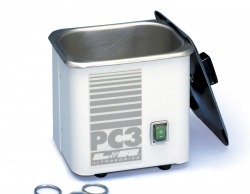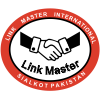Wide range of Surgical, Dental & Manicure products
Mohallah Rangpura Awana, Sialkot
- Home
- Our Products
Manicure
Surgical
Dental
- Instrument Care
- Online Enquiry
- About Us
- Contact Us
The proper care and handling of instruments improve their longevity and function. Therefore, Link Master provide proper care and maintenance to our products. When these products are in your hands, make sure that they are cleaned and disinfected. Choose a protocol appropriate for your environment from the cleaning techniques below.
RINSING
Immediately after use, rinse instruments under warm or cool running water to remove all blood, body fluids and tissue. Dried soils may damage the instrument surface and make cleaning very difficult. Do not use hot water as this will coagulate proteinous substances.
CLEANING TECHNIQUES
Time, temperature, and agitation play important roles in the cleaning process.
Time — the efficiency of cleaning chemicals is often time dependant
Temperature — higher temperature cleaning solutions result in better cleaning
Agitation — whether manual or ultrasonic, it is helpful in loosening the soil on the surface of the instrument
Ultrasonic Cleaning
 Ultrasonic is the most effective cleaning method. Ultrasonic cleaning is the result of cavitation. Vibrating sound waves create micron-size bubbles in solution that grow with the alternating pressure. When they reach a resonant size, the bubbles implode creating a force that dislodges dirt and particles, even in the smallest of crevices. Use of ultrasonic detergent greatly improves the cavitation rate as opposed to plain water.
Ultrasonic is the most effective cleaning method. Ultrasonic cleaning is the result of cavitation. Vibrating sound waves create micron-size bubbles in solution that grow with the alternating pressure. When they reach a resonant size, the bubbles implode creating a force that dislodges dirt and particles, even in the smallest of crevices. Use of ultrasonic detergent greatly improves the cavitation rate as opposed to plain water.
1. Mix enzymatic, or other neutral pH or mild alkaline detergent per manufacturer recommendations.
2. Use deionized water, if available.
3. Run ultrasonic cleaner for several minutes to degas the solution and obtain correct temperature.
4. Place instruments in open position into the ultrasonic cleaner. Do not allow instruments with sharp blades to touch other instruments. All instruments must be fully submerged.
5. Do not place dissimilar metals (stainless, copper, chrome plated, etc.) in the same cleaning cycle.
6. Instruments should be processed in cleaner for 5-10 minutes.
7. Rinse instruments with water to remove ultrasonic cleaning solution and any remaining soils.
8. Dry instruments thoroughly with a clean towel. This minimizes the risk of corrosion and formation of water spots.
9. Use spray lubricant in the hinges to improve function of instrument.
Automatic Washer Sterilizers
Follow manufacturer’s recommendations. Lubricate instruments after last rinse cycle and before sterilization cycle.
Manual Cleaning
1. Use stiff plastic cleaning brushes. Do not use steel wool or wire brushes.
2. Use only neutral pH detergents. If not rinsed properly, low pH detergents may breakdown the stainless protective surface and cause black staining. High pH detergents may cause surface deposits of brown stains, which can interfere with the smooth operation of the instrument.
3. Brush delicate instruments carefully and, if possible, handle them separately from general instruments.
4. Inspect all instrument surfaces to ensure they are visibly clean and free of stains and tissue. Inspect each instrument for proper function and condition. Scissor blades should glide smoothly and the blades must not be loose when in closed position. Check that forceps tips are properly aligned. Hemostats and needle holders should not show light between the jaws, they should lock and unlock easily, and the joints should not be too loose. Check needle holder jaws for wear. Examine cutting instruments and knives to be sure their blades are sharp and undamaged.
5. Rinse instruments thoroughly under running water. While rinsing, open and close scissors, hemostats, needle holders and other hinged instruments to ensure that hinge areas are also rinsed.
6. Dry instruments thoroughly with a clean towel. This minimizes the risk of corrosion and formation of water spots. Use spray lubricant in the hinges to improve function of instrument.
Soaking
Large, non-delicate instruments can be soaked in a corrosion inhibiting detergent when other cleaning methods are not practical. Rinsing and drying after soaking is recommended.
STERILIZING
Autoclaving
1. Lubricate all instruments that have any metal-to-metal action such as scissors, hemostats, needle holders, self retaining retractors, etc. Surgical instrument lubricants (WPI #500126) should be used.
2. Instruments may be autoclaved individually or in sets.
- Individual instruments—Disposable paper or plastic pouches are ideal. Use a wide enough pouch (4” or wider) for instruments with ratchet locks (such as needle holders and hemostats) so the instrument can be sterilized in an open (unlocked) position.
- Instrument Sets—Unlock all instruments and sterilize them in an open position. Place heavy instruments on bottom of set (when two layers are required).
3. Never lock an instrument during autoclaving. This will prevent the steam from reaching and sterilizing the metal-to-metal surfaces. Furthermore, heat expansion during autoclaving can cause cracks in hinge areas.
4. Do not overload the autoclave chamber, as this may also hinder steam penetration.
5. Place a towel on bottom of pan to absorb excess moisture during autoclaving.
6. At the end of the autoclave cycle (before the drying cycle) unlock autoclave door and open it no more than a crack (about 3/4”). Run dry cycle for the period recommended by the autoclave manufacturer. If the autoclave door is opened fully before the drying cycle, cold room air will rush into the chamber, causing condensation on the instruments. This will result in water stains on instruments and also cause wet packs.
Cold Sterilization
Most cold sterilization solutions require a 10-hour immersion to render instruments sterile, but this prolonged chemical action may be more detrimental to surgical instruments than the 20-minute autoclave cycle. If the instruments need only to be disinfected (basically clean), cold sterilization is acceptable since disinfection will take place in only 10 minutes.
But to render the instruments sterile (with absolutely no living organism surviving), autoclaving is recommended.
For instruments with tungsten carbide inserts (needle holders, scissors, tissue forceps), do not use solutions containing benzyl ammonium chloride which will destroy the tungsten carbide inserts.
STORAGE
Instruments should be stored in a clean and dry environment until use.
STAIN GUIDE FOR STAINLESS STEEL
Although stainless steel is corrosion resistant, it can still rust and/or stain if handled improperly. To determine if a discoloration is rust or just a stain, erase the discoloration with a pencil eraser. If there is pitting in the metal under the discoloration, it is corrosion. If the discoloration is removed, it was just a stain.

Free shipping
All over the world

100% Satisfaction
High quality products

Security Assurance
100% secure payment

Support online
24/7 Support
Contact Us
Main Office
Phone: +92 52 4570224
Mobile: +92 333 8605477, +92 333 8605476
Sub Office (UAE)
Fax: +971 674 491 39
Phone: +971 674 491 36
Mobile: +971 50 5102719, +971 55 8851790
Copyright © 2022 Link Master. All Rights Reserved. Designed, developed and maintained by Theta Solutions.

